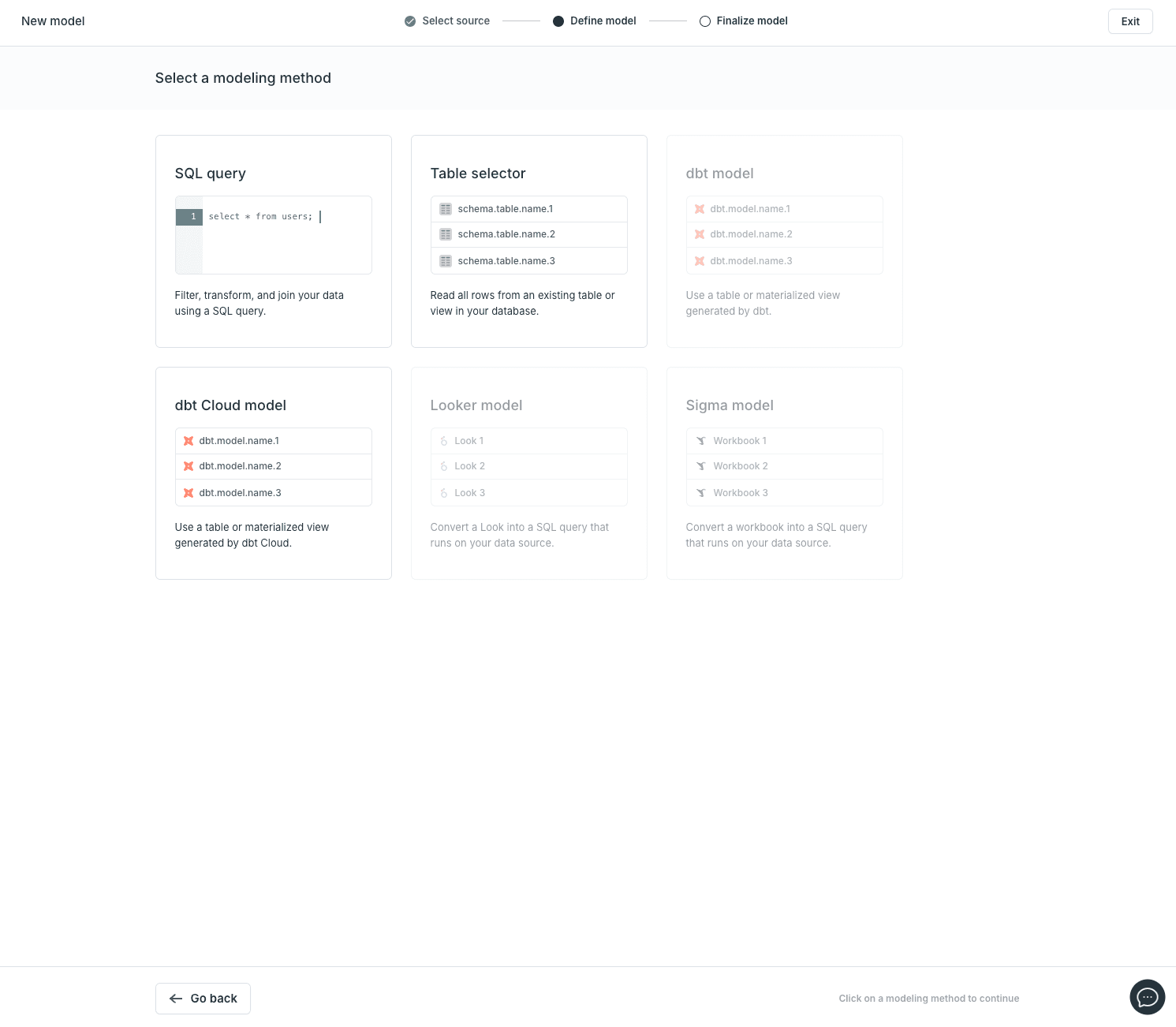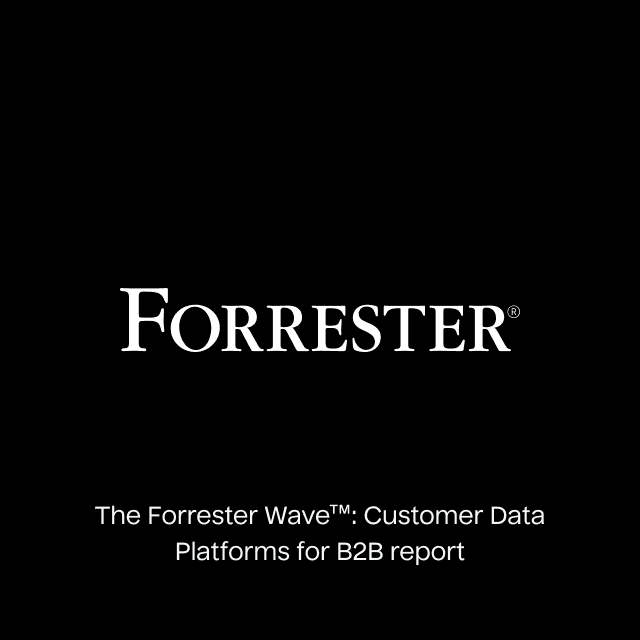As privacy regulations evolve and traditional tracking methods become unreliable, marketers struggle to measure conversions accurately and confidently attribute ad performance. Amazon's Conversions API solves this challenge by enabling server-side delivery of conversion data directly to Amazon, giving you complete ownership over your data pipeline and significantly improving event deliverability. In this guide, we'll show you how to set up the Amazon Conversions API so you can send conversions directly to Amazon, optimize your retail media campaigns, and increase your return on ad spend.
How to set up the Amazon conversion API?
1. Connect to your data source

Start by creating a Hightouch account. Once you're logged in:
- Navigate to the Integrations, then Sources.
- Select the data source that contains your event and customer data. This could be a data warehouse like Snowflake, BigQuery, Redshift, or a database like Postgres or MySQL.
- Enter your configuration details, such as credentials and hostnames, to authenticate your data source.
Hightouch will validate your connection and give you access to the schema for building your data model.
2. Define your data model

Next, define the event data you want to send to Amazon. You can do this in three ways:
- SQL Editor: Write custom SQL to join and transform data for precise control.
- Table Selector: Choose pre-built tables and columns directly without needing SQL.
- Visual Audience Builder: Use a no-code interface to filter and segment your data based on behavior, properties, or timestamps.
This data model is the source of truth for what gets sent to Amazon. Typical fields include user identifiers (email, phone), event names (purchase, signup), and metadata (value, currency, timestamp).
3. Create an Amazon conversion destination

Now it’s time to connect Hightouch to Amazon:
- Go to the Integrations, then Destinations.
- Click Add Destination and select Amazon.
- Log in to Amazon to authorize the connection.
4. Send Conversions to Amazon
Finally, you’ll configure your sync:
- Got to Activation, then Syncs.
- Click Add sync.
- Choose the model you created and your Amazon destination.
- Map the data fields in your model to Amazon's expected parameters
- Run your sync.
What is the Amazon conversions API?
The Amazon Conversions API is an alternative to traditional web pixels and JavaScript tags and a more accurate way to send conversion data back to Amazon. This direct, server-side approach allows you to leverage your 1st-party data and control exactly what user-completed events and associated values you send to Amazon so you can optimize your campaigns toward the outcomes that matter most to your business and avoid the deliverability issues caused by adblockers and browser restrictions.
Benefits of using the Amazon conversion API
The Amazon Conversions API offers advertisers a more resilient and precise way to send event data to Amazon, enabling better campaign performance and measurement. Unlike browser-based tracking (e.g., traditional pixels), the Conversions API operates server-side, reducing data loss and enhancing targeting, even as privacy regulations tighten.
- Lower your Cost Per Result (CPR) by up to 13%: By reducing signal loss and giving Amazon a more complete view of user behavior, the Conversions API helps improve ad delivery optimization across Amazon's retail ecosystem. It enables more accurate event matching and supplies better training signals to Amazon's algorithm, resulting in smarter bidding and targeting for both on-Amazon and off-Amazon campaigns. Altogether, this leads to lower CPRs and allows your budget to go further when reaching high-intent shoppers.
- Increase attributed purchase events by up to 19%: When tracking breaks due to ad blockers, iOS restrictions, or cookie limitations, Amazon may undercount conversions. The Conversions API solves this by sending events directly from your server, making them less likely to be blocked. You can also use deduplication to send both browser and server-side events. This ensures more conversions are accurately attributed to your retail media campaigns and improves Amazon's optimization engine for both sponsored products and display advertising.
- Boost your Return on Ad Spend (ROAS): More complete and reliable conversion data enables Amazon to make better optimization decisions for your product campaigns and brand awareness initiatives. This translates into sharper audience targeting and more efficient budget allocation toward high-performing product categories and customer segments. As a result, your campaigns deliver stronger performance, especially when optimizing for key actions like purchases, add-to-cart events, or product detail page views.
- Unlock better measurement and attribution: With server-side tracking, you gain more control over what data you send to Amazon and how it is structured. You can include offline events like in-store purchases at Amazon physical locations, enrich conversion events with custom fields such as product categories, brand metrics, or customer lifetime value (LTV), and apply deduplication logic to avoid counting the same event twice. This flexibility improves your analytics and helps align Amazon optimization with real retail business outcomes.
- Future-proof campaigns against privacy changes: As browser vendors and operating systems roll out stricter privacy features like third-party cookie blocking and App Tracking Transparency, traditional pixel-based tracking becomes less reliable. The Conversions API lets you maintain robust conversion tracking using first-party data delivered from your server, which is more resilient to these restrictions. That means you can continue measuring and optimizing your Amazon retail media campaigns even in a privacy-first digital landscape.
What's the difference between a pixel & the Amazon conversions API?
A traditional pixel runs on the user's browser or web application and sends conversion events back to Amazon automatically. Unlike a traditional pixel, the Amazon Conversions API allows you to send conversion data directly from your server to Amazon. Pixels are easy to implement but less reliable; conversion APIs are slightly harder to implement but much more reliable because they give you full control over the conversion signals you send back to Amazon.
Here's a quick table highlighting the difference between a traditional web pixel and the Amazon Conversions API:
| Feature | Traditional Pixel | Amazon Conversions API |
|---|---|---|
| Tracking Method | Track events using web script or mobile SDK | Track and store events in your data warehouse or another internal system (e.g., CRM or CDP) |
| Delivery Method | Events sent client-side via web script or mobile SDK | Events sent server-side via API from your server to Amazon |
| Reliability | Frequently blocked by ad blockers, cookie restrictions, & network interruptions | No interference from ad blockers, browsers, or operating systems |
| Supported Properties | Typically only supports website conversions | Supports both online & offline conversions |
| Privacy & Compliance | Limited control over what data you share with Amazon | Maintain complete control over exactly what data you share with Amazon to manage opt-out compliance |
| Benefits | Easy to implement | Better spend efficacy, more accurate attribution, & better consent management |
Why are companies switching to conversion APIs?
Ad blockers, browser restrictions, and operating system policies, such as Intelligent Tracking Prevention (ITP) and App Tracking Transparency (ATT) from Apple, are making client-side tracking through traditional pixels increasingly unreliable. To combat this, nearly every major ad network is introducing new conversion APIs to support server-side events so advertisers can more reliably send their data to Amazon to optimize their retail media campaigns.
- Offline conversion tracking: Track and upload offline conversions not captured through client-side tracking, such as in-store purchases at Amazon Fresh, Whole Foods, or Amazon physical stores, and cross-channel sales attribution between online and offline Amazon touchpoints. This is especially valuable for brands selling through multiple Amazon channels and retail partners, enabling you to connect digital advertising to real-world purchase behavior across Amazon's retail ecosystem.
- Advanced matching: Increase your event-match quality by enriching conversion events with first-party customer attributes and additional third-party identifiers. This will improve Amazon's ability to match conversion events to users by including data like email, phone number, and shipping address, as well as system identifiers like IP address or user agent. This will boost your match rates and ensure more conversions are correctly attributed to your Amazon campaigns, particularly important for brands tracking customer journeys across multiple Amazon touchpoints and retail channels.
- Value-based bidding: Send conversion values to Amazon to unlock value-based bidding so the algorithm can bid more on high-value conversions and less on low-value ones. By including monetary values tied to each conversion, Amazon can optimize not just for quantity but also for value, improving your return on ad spend by bidding more aggressively for high-value customers and premium products within Amazon's marketplace and across their advertising network.
Amazon conversion API use cases
With the Amazon Conversions API, you can tailor your setup and bidding strategy to align with your retail and brand objectives. Whether you're focused on driving more product sales, increasing marketplace revenue, or maximizing profit from your Amazon presence, the API allows you to send the data Amazon needs to optimize campaigns across its retail media network.
Optimize for conversion volume
To optimize for conversion volume, configure your setup to send conversion events without attaching revenue or monetary values. These events represent actions like purchases, subscriptions, or product interactions, which aim to increase quantity across Amazon's marketplace and advertising network. Use Amazon's volume-based bidding strategies to drive the highest conversions at the lowest cost per action among high-intent shoppers.
| Industry | Optimization Goal |
|---|---|
| Amazon Marketplace Sellers | Maximize the volume of purchase events across Amazon marketplace, mobile app, and physical Amazon stores |
| Streaming & Digital Content | Maximize the volume of Prime Video, Music, or Kindle subscription sign-ups |
| Amazon Financial Services | Maximize the volume of Amazon Pay adoption and Amazon credit card applications |
| Amazon Business (B2B) | Maximize the volume of business account signups and bulk order requests |
| Amazon Travel | Maximize the number of bookings through Amazon's travel and experience offerings |
| Amazon Health | Maximize the volume of Amazon Pharmacy signups and health service registrations |
| Amazon Education | Maximize the volume of enrollments for Amazon training programs and certification courses |
Optimize for conversion value
To optimize for conversion value, send the gross revenue associated with each conversion event, such as the order value or subscription fee. Amazon's value-based optimization will then aim to increase total revenue from your campaigns rather than just the number of transactions across their retail ecosystem.
| Industry | Optimization Goal |
|---|---|
| Amazon Marketplace Sellers | Maximize the gross revenue value of each purchase across all Amazon channels |
| Streaming & Digital Content | Maximize the gross revenue from Prime memberships and premium content subscriptions |
| Amazon Financial Services | Maximize the potential value of financial product adoptions and high-limit credit applications |
| Amazon Business (B2B) | Maximize the volume of qualified business accounts and high-value bulk orders |
| Amazon Travel | Maximize the gross revenue value of travel bookings and premium experience packages |
| Amazon Health | Maximize the gross revenue value of pharmacy orders and premium health service packages |
| Amazon Education | Maximize the gross revenue value of certification program enrollments and premium learning packages |
Optimize for financial outcome
Calculate and send the predicted financial value of each conversion to optimize for financial outcomes like profit or customer lifetime value. This could be estimated profit margins, post-cost revenue, or LTV from repeat Amazon customers. Then use Amazon's advanced optimization algorithms to align ad spend with real marketplace business performance.
| Industry | Optimization Goal |
|---|---|
| Amazon Marketplace Sellers | Maximize the estimated profit of sales by subtracting Amazon fees, fulfillment costs, and product costs |
| Streaming & Digital Content | Maximize the estimated lifetime value of Prime members and content subscribers based on retention likelihood |
| Amazon Financial Services | Maximize the predicted value of financial product customers based on usage patterns and creditworthiness |
| Amazon Business (B2B) | Maximize the predicted revenue value of business accounts using order history, contract value, and repeat purchase behavior |
| Amazon Travel | Maximize the estimated profit from travel bookings by subtracting partner fees and operational costs |
| Amazon Health | Maximize the gross profit value or estimated lifetime value of pharmacy customers and recurring health service users |
| Amazon Education | Maximize the gross profit value or estimated lifetime value of certification students, including advanced program upsells and career service add-ons |
What events does the Amazon conversions API support?
Amazon supports two types of events: standard events and custom events.
Standard events are predefined actions that Amazon provides by default for basic use cases across industries.
Custom events are not predefined by Amazon but can be configured to track user-completed events not covered by the standard events. Not every ad platform will support the same events or have the same naming convention. Additionally, it's always best to map your events back to standard events because the AI algorithms are trained on standard events and not custom ones.
Here's a table breakdown of the most common standard events and custom events that Amazon supports:
| Category | Event Type | Goal |
|---|---|---|
| Purchase Events | Purchase, Complete Registration, Donate, Place an Order | Track & optimize toward purchases |
| Checkout Flow Events | Add to Cart, Initiate Checkout, Add Payment Info | Track and optimize toward steps that lead to purchases |
| Engagement Events | Customize Product, Add to Wishlist, View Content, Search, Find Location, Click Button | Track and optimize engagement with key actions on your site or in your app |
| Lead Capture Events | Subscribe, Submit Application, Start Trial, Contact Captured, Lead Captured, Scheduled, Download, Submit Form | Track and optimize toward lead capture |
| Custom Events | Business- or industry-specific actions (e.g., Product Review Submitted, Prime Membership Started, Subscribe & Save Enrolled) | Track and optimize toward custom conversion events |
FAQS
Where can I access the Amazon Conversions API?
You can read more about Amazon Conversions API in Amazon's documentation. Depending on your use case and implementation, you may need to contact Amazon directly.
How do I check if the Amazon Conversions API is working?
Check for successful API responses and verify that Amazon has successfully received your events. Then, run a campaign to see if your ads are being attributed to conversions. (Note: If you don't see any attributed conversions, there's a chance that the ad just isn't converting.)
What match rate should I expect from the Amazon Conversions API?
Your match rates can vary widely depending on the quality and coverage of unmatchable attributes you collect and/or enrich for each event and send to Amazon. Sending additional identifiers like system attributes (e.g., IP address and user-agent), customer attributes (e.g., email and phone), and pseudonymous attributes (e.g., Click ID and Mobile Ad ID) can improve your match rates.
How often should I upload conversions?
Every ad platform has different recommendations, but the best practice is to upload your conversion events to Amazon daily to ensure you're providing the targeting algorithms with immediate feedback.
What data should I include when uploading conversion events?
Each conversion event you send should include consented attributes about your users to achieve the highest match rates and accuracy for maximum campaign effectiveness, attribution, and measurement. Here's a quick list of the most important data to upload with your conversion events:
- System Event Parameters: Required attributes that tell the system what happened (e.g., event name and ID) and when it happened (e.g., event date and time).
- Consent Parameters: Attributes that tell Amazon how to use the data and how the data should be processed to comply with regional requirements and customer data-sharing preferences.
- Customer Information Parameters: Additional customer attributes used to help the system match a conversion event back to their users and devices (e.g., email, phone, mobile ad IDs, and click IDs).
- Conversion Value Parameters: Monetary values (e.g., revenue, profit, LTV, etc.) assigned to conversion events that help Amazon bid more on high-value conversions and less on low-value ones.
How long does it take for your conversion data to be available in Amazon?
The Amazon Conversions API will receive data instantly, but it may take at least 24 hours to process and make available in campaign performance reports.
Does the Amazon conversions API have rate limits?
Rate limits always vary by ad platform, so you'll need to look through Amazon's documentation to understand the platform's intricacies.















